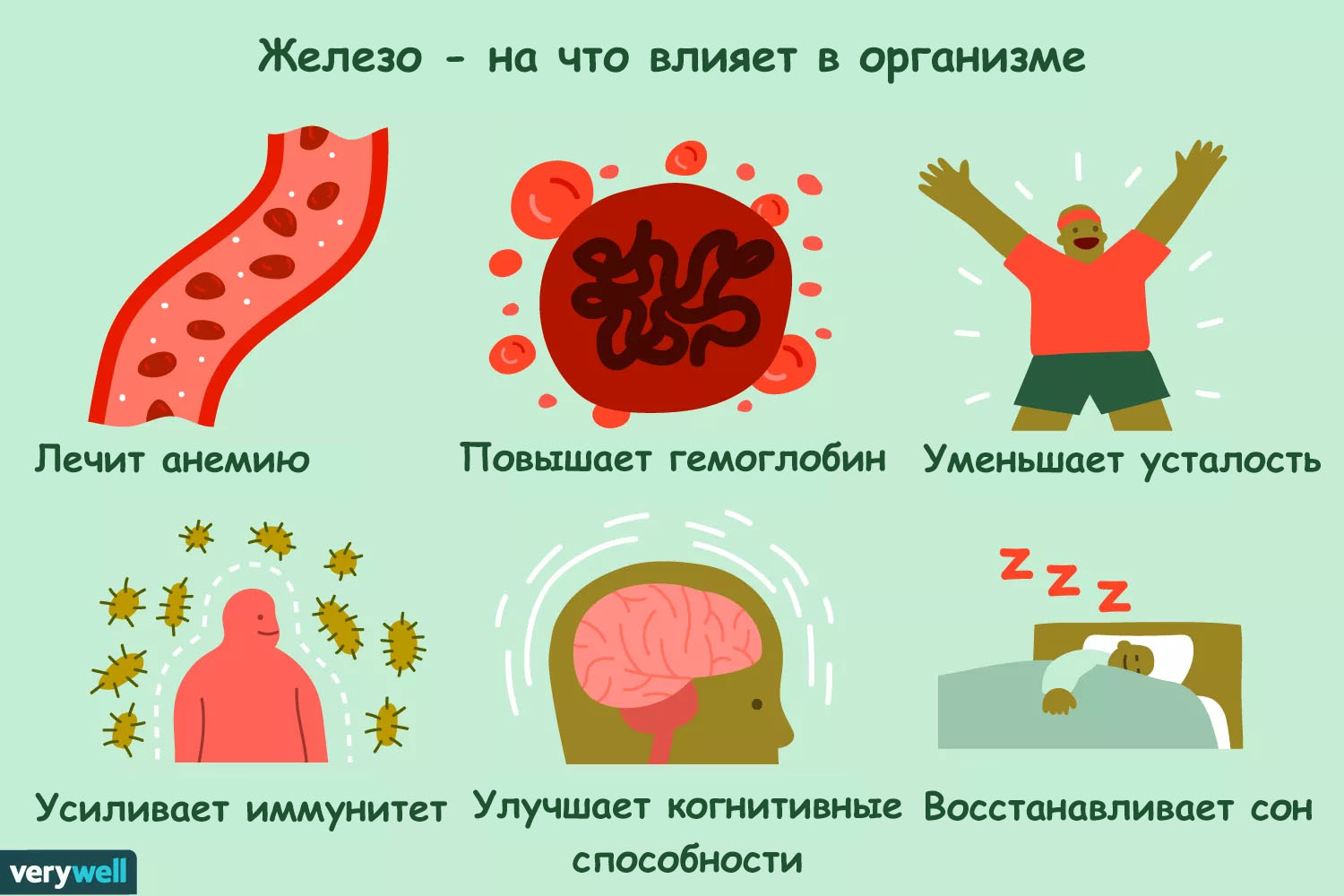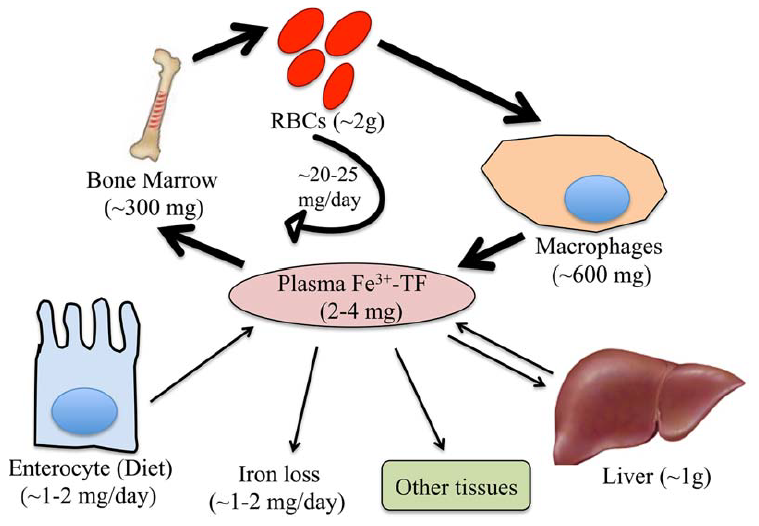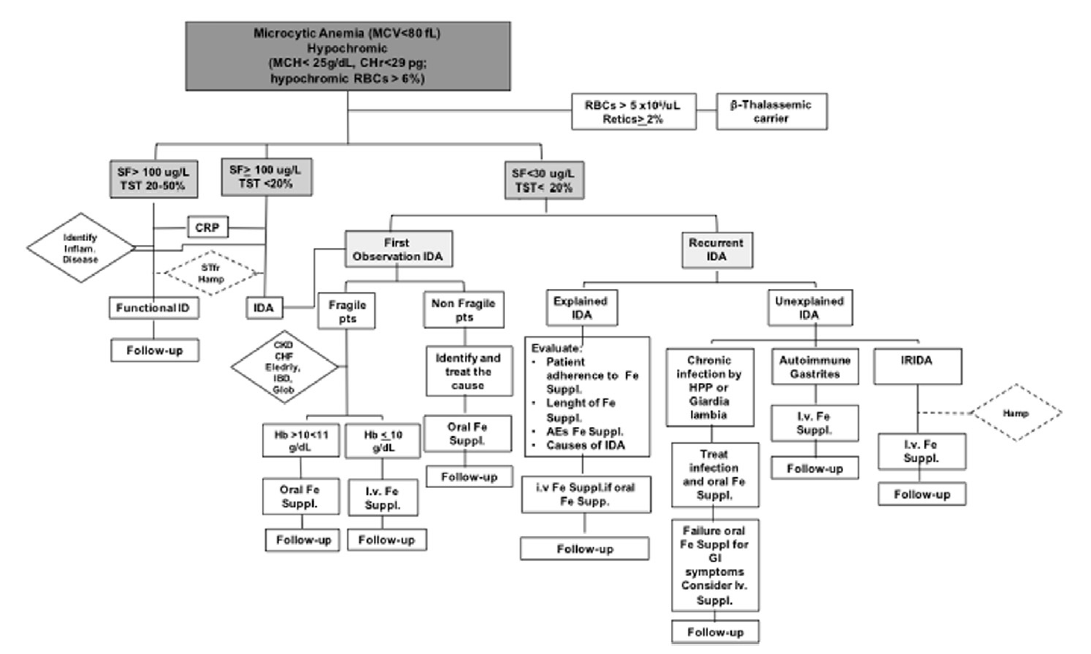Iron is an important element for a number of fundamental body functions, one of which, cognitive ability, is critical for geeks.
In addition, iron regulates a number of processes, some of which are shown in the picture.
In the article, we will figure out what are the causes of iron imbalance, what tests to take for control, and how to maintain its level in the normal range.

Iron homeostasis
, [1].

. 1. . (Fe) , (TF) ( , ).
(RBCs), , .
.
, [1].
(2 ) .
( 60% 80% ).
.
(2–4 ). , ( ) (20–25 ).
1–2 , 1–2 , , .
, -, , - .
, [1].
( ).
, , 50 % [2].
, , , .
, , ( ), , , (, ), ( , ) [1].
(, , , , – ( ) [3]) ( ) .
, , [4,5].
, , ().
, .
, . , , .
, .
- , .
, , [1].
, , ( ) .
.
( , )[6].
, , .
, ()- () . , , , [7].
, 1930- - 2-4 , 1 ( — , ).
, . -, .
.
[8].
, .
, .
(SF) (TST) (. 2):
1) , , . , - , . , .
2) β- , 1, .
1. [8].

– , – , ↓ -, ↑ — , ↓↓ — , — .
3) SF TST : (1) SF > 100 / TST 20–50%; (2) SF > 100 / TST < 20%; (3) SF < 30 / TST < 20%.
4) - .
5) . ( 3), . , () . , - .
6) . . — , [9]. , . . .
(.)
. 2. [9].
:
- , . — .
- , , , .
- (30-100 ) ( 2) .
- () .
- , ( ) . , , .
2. [8]. 1 .

/, , .
, . , , .
, , , , . .
, .
( 3).
3. [8]

.
– 10 – 30 ( 4).
4. .

, , , , . .
, , .
, , , , - , .
, , , , , .
, , , . C- ( , ) , , , .
, .
, .
.
Lifext ,
, . , .
Lifext.
— + .
, Google. Lifext, . ( ) + .
— 120. ( 1,9$, ). , . - , , .
, , ;)


-
[1] S. Dev, J.L. Babitt, Overview of iron metabolism in health and disease, Hemodial. Int. 21 (2017) S6–S20. doi:10.1111/hdi.12542.
[2] E. McLean, M. Cogswell, I. Egli, D. Wojdyla, B. De Benoist, Worldwide prevalence of anaemia, WHO Vitamin and Mineral Nutrition Information System, 1993-2005, Public Health Nutr. 12 (2009) 444–454. doi:10.1017/S1368980008002401.
[3] P. Guggenbuhl, Y. Deugnier, J.F. Boisdet, Y. Rolland, A. Perdriger, Y. Pawlotsky, G. Chalès, Bone mineral density in men with genetic hemochromatosis and HFE gene mutation, Osteoporos. Int. 16 (2005) 1809–1814. doi:10.1007/s00198-005-1934-0.
[4] A.L. Fracanzani, D. Conte, M. Fraquelli, E. Taioli, M. Mattioli, A. Losco, S. Fargion, Increased cancer risk in a cohort of 230 patients with hereditary hemochromatosis in comparison to matched control patients with non-iron-related chronic liver disease, Hepatology. 33 (2001) 647–651. doi:10.1053/jhep.2001.22506.
[5] C. Borgna-Pignatti, G. Vergine, T. Lombardo, M.D. Cappellini, P. Cianciulli, A. Maggio, D. Renda, M.E. Lai, A. Mandas, G. Forni, A. Piga, M.G. Bisconte, Hepatocellular carcinoma in the thalassaemia syndromes, Br. J. Haematol. 124 (2004) 114–117. doi:10.1046/j.1365-2141.2003.04732.x.
[6] A. Poujois, J.C. Devedjian, C. Moreau, D. Devos, P. Chaine, F. Woimant, J.A. Duce, Bioavailable Trace Metals in Neurological Diseases, Curr. Treat. Options Neurol. 18 (2016). doi:10.1007/s11940-016-0426-1.
[7] M.J. Murray, A.B. Murray, M.B. Murray, C.J. Murray, The adverse effect of iron repletion on the course of certain infections, Br. Med. J. 2 (1978) 1113–1115. doi:10.1136/bmj.2.6145.1113.
[8] M.S.Y. Low, G. Grigoriadis, Iron deficiency and new insights into therapy, Med. J. Aust. 207 (2017) 81–87. doi:10.5694/mja16.01304.
[9] L. De Franceschi, A. Iolascon, A. Taher, M.D. Cappellini, Clinical management of iron deficiency anemia in adults: Systemic review on advances in diagnosis and treatment, Eur. J. Intern. Med. 42 (2017) 16–23. doi:10.1016/j.ejim.2017.04.018.